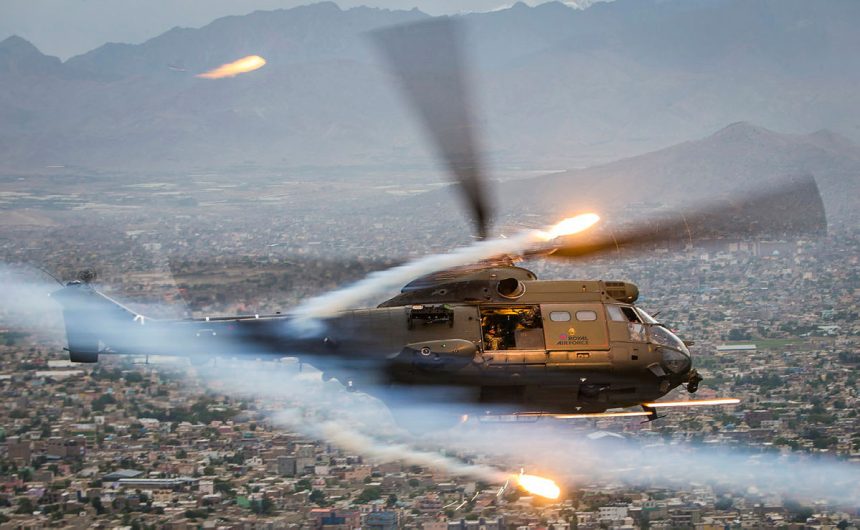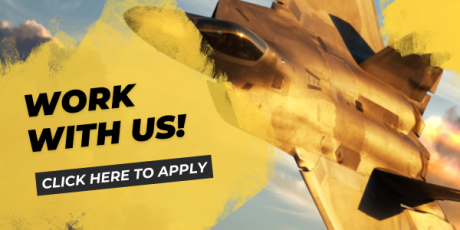After 54 years of continuous service, the RAF’s Puma fleet is set to retire today, ending a remarkably active career.
On Mar. 26 and 27, 2025, the RAF Puma HC2 carried out its final flights as a part of a farewell tour over the United Kingdom and Cyprus. The Puma had led a remarkable career flying on the majority of UK military operations since its introduction into service in 1971.
As the Puma retires, this article looks back on the history of this workhorse helicopter and examines its legacy within the RAF.
RAF Pumas from 33 Squadron depart from @RAFBenson for the final time.
The Puma has been in Service for 54 years and begin its draw down on 31 March.
Introduced in 1971, it has been successfully deployed in various Operations & humanitarian missions.
🔗 https://t.co/kRXSDV7Rri pic.twitter.com/3tlEsl8mVI
— Royal Air Force (@RoyalAirForce) March 27, 2025
At the time of its retirement, the RAF’s Puma HC2 force was split between five squadrons, No. 33, No. 22 and No. 28 Operational Conversion Unit (OCU), based at RAF Benson in South Oxfordshire, England, whilst No. 84 squadron was based at RAF Akrotiri in Cyprus and No. 230 was based at Medicina Lines in Brunei. In total, 24 aircraft were split amongst these squadrons allowing concurrent operations all across the world.

For the fly-past in the UK, a formation of three Puma HC2s, painted in their standard green camouflage, were selected for the multi-leg journey over bases of distinct importance to the Puma force and its history. The trio of helicopters XW224:L, ZA939:U and ZJ954:W took off from RAF Benson, the current home of the Puma force, before flying to their old base at RAF Odiham that is now the center of the RAF’s Chinook fleet.
MOD Boscombe Down was another notable spot that the Puma’s visited, with the site having played a key role in the testing and trialing of the Puma HC2 as it was going through its life extension program in 2012. Additionally, the fly-past would go on to visit RAF Shawbury, RAF Valley, RAF Cranwell and RAF Leeming, all current training centers for pilots and aircrew on both helicopters and fast jets.
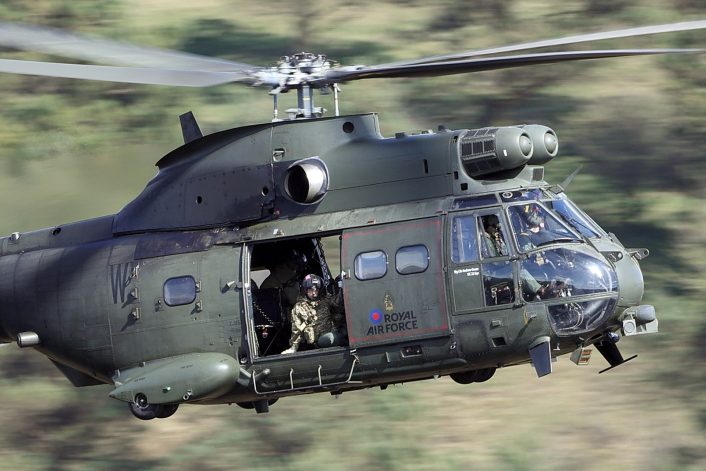
Aldergrove, in Northern Ireland, was another distinctive spot on the visit list, as the Puma force had been a central part of the RAF’s contribution to Operation Banner, during the Troubles in Northern Ireland. From the late 1970s until 2009, Pumas provided a near constant presence there, supporting the British Army as it fought against the Irish Republican Army.
The Puma provided vital troop transport and logistics capability to the forces involved, its ability to rapidly relocate and respond to any crisis made it an essential aircraft for the theatre. It could also provide an air support role with its pintle mounted General Purpose Machine Gun (GPMG) being able to suppress ground fire with relative ease.
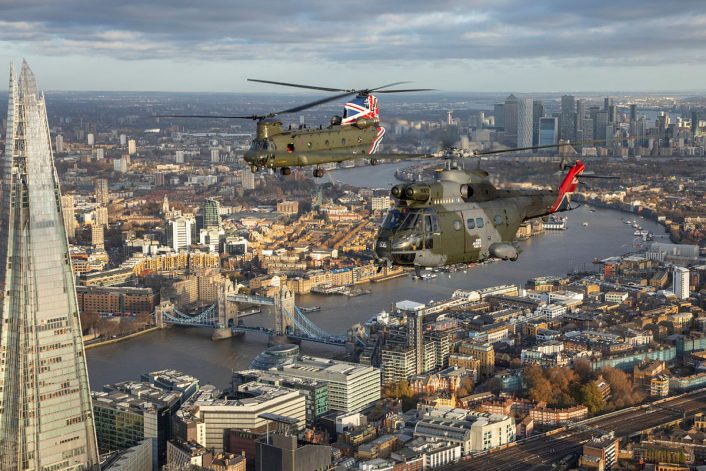
The Puma formation later flew over a number of key sites following their visit to Northern Ireland. This included the historic Duxford Aerodrome, home to the Imperial War Museum, where one of these helicopters will hopefully end up as a permanent exhibit. The trio of helicopters would then move onto central London where they flew over the city for the final time, a location that had been commonly frequented by Pumas as they transited along the River Thames. The Puma will certainly be missed flying along the London skyline.
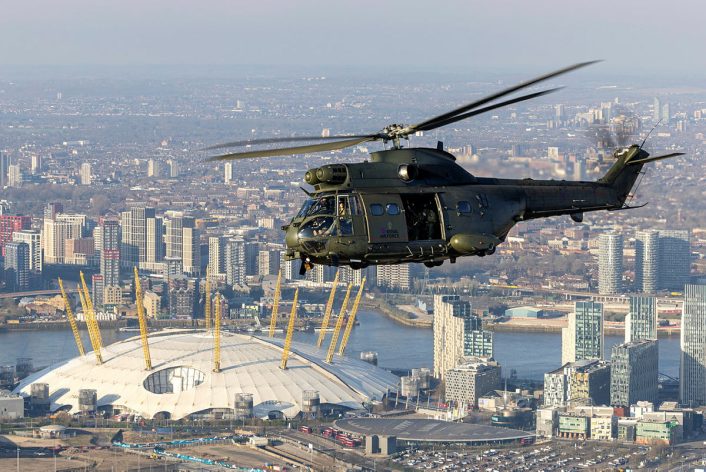
Soon after the completion of this leg, the Pumas returned to RAF Benson, their final flight complete.
On completion of the fly-past Puma Force commander Wing Commander Nick Monahan said:
“It is quite a complex plan. I’ve had one of the team working away at it for about two months now. Working out the different ways in which we could achieve everything we wanted to, and go through all of the sites that have got significance for the Puma, and that includes going across to Northern Ireland, where we served for over 37 years.”
“Still looks great” after 54 years🗣️🚁
The RAF is bidding farewell to the Puma after it has served for more than 50 years.
Sqn Ldr Niall Davidson has commended the outgoing aircraft on its years of service.
Read more🔗https://t.co/nbB1F9cB70 pic.twitter.com/QQbSLK44Pt
— BFBS Forces News (@ForcesNews) March 30, 2025
The Puma HC1
The Puma HC1 was born out of the 1967 agreement between the UK and France to develop a joint helicopter program, in which their separate industries would cooperate to design and build three rotary types. Aiming to ease logistics and increase the economy of scale for production of the helicopters, Britain’s Westland joined forces with Sud-Aviation to produce the Aerospatiale Gazelle, the Westland Lynx and of course the Puma.
A couple of #Puma photos from amongst the recent donation of RAF Regiment items – both believe to be in Belize! #DiverseAviation pic.twitter.com/bcmNKFjthe
— Newark Air Museum (@NewarkAirMus) January 20, 2022
The original design, called the SA300, came from Sud-Aviation, a precursor company to Aerospatiale and later Airbus Helicopters. This design would be reworked to British military standards by Westland to become the SA330 Puma. A total of 48 HC1 variants would be produced over the lifetime of the helicopter’s operation with them entering service in 1971.
The Puma HC1 would see active service all over the globe throughout its RAF career. They would deploy in 1979 to Rhodesia as a part of Operation Agila, where 1500 British and Commonwealth forces relocated there to monitor the ceasefire agreement that had brought a close to the Rhodesian Bush War.
Favourite memory of the Puma (and probably my time in the RAF). Flying into the Jungle in Belize, banked over coming into the DZ and the loady slid the side door open, 3 Red and Blue Parrots on set wings gliding just above the jungle canopy perfectly framed in the door. Epic. pic.twitter.com/JY0Z3hP2L9
— Tuffer (@TufferB) March 26, 2025
They would also fly from Belize during a lengthy deployment supporting the RAF’s Harrier detachment in its deterrent activities. A British force was sustained in Belize due to a long running border dispute with neighboring Guatemala, who claimed a large chunk of Belizean territory. The force was there to deter Guatemala from acting on its claims as it had threatened to do in 1948 and again in 1972, when Britain was forced to deploy a Carrier Strike Group (CSG) to ward off the threat of attack.
The deployment of Harriers and Pumas would be seen as successful, helping to reduce tensions by bringing overt attention to the UK’s vow to defend Belize as it had the Falkland Islands. As a result, the force would draw down in 1994, with Belizean independence recognized by Guatemala and the threat of invasion over.
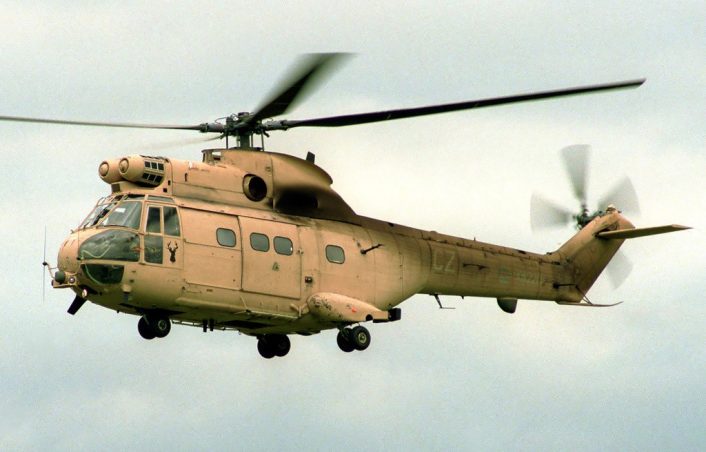
In 1991 a detachment of Pumas would be painted a pink sandy color for their deployment to Saudi Arabia for Operation Desert Shield and Desert Storm. Here the helicopter was used primarily as a logistics aircraft supporting the ground advances of the various ground units deployed during the five-day campaign to liberate Kuwait.
Notably, however, on their return to the Gulf in 2003 for the Invasion of Iraq, RAF Puma’s would be used in the air assault role where they supported 16 Air Assault Brigade in the capture of the Rumaila oil fields from Iraqi forces. In doing so, they prevented a total environmental disaster as the Iraqis looked to sabotage the oil field and set it ablaze to delay the advance of the Coalition. Thanks to the speed and agility of the RAF Puma and British Army Lynx helicopters 16 AAB was able to secure Rumaila, preventing Iraqi forces from burning the fields as they had done during the First Gulf War.
2012 London Olympics
One of the Puma’s more overt deployments took place during the London Olympics, where they provided security and overwatch during the historic event.
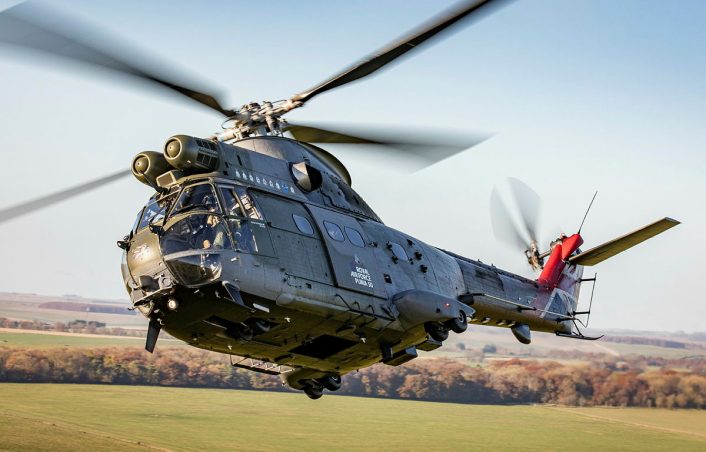
Codenamed Operation Olympics, the UK deployed 17,000 military personnel to aid the Metropolitan Police and private security firm G4S in securing the games from possible threats. The RAF assumed responsibility for aerial counter terror operations, preventing the use of aircraft light or otherwise to target the Olympic games. For this purpose, Rapier and Starstreak surface to air missile systems were set up in central London, and four Typhoons relocated to RAF Northolt in London for temporary quick reaction alert (QRA) taskings over the capital.
Whether it’s flying in a Puma or a Chinook, 28 (AC) Squadron train all @RoyalAirForce support helicopter aircrew for the front line.
Night flying is a key skill they must master and practice regularly. It can also give spectacular views such as these over London. pic.twitter.com/gyyxjrwaM8
— RAF Benson (@RAFBenson) March 30, 2022
Additionally, a number of Puma HC1s were forward deployed to the Ilford Territorial Army center, in East London. From here these Puma’s would provide light air defense duties over London carrying teams of RAF Regiment snipers, who were tasked with shooting down light aircraft if they threatened the Olympics in any way. They also provided casualty evacuation (CASEVAC) and fast response duties, if the need ever arose, giving the Metropolitan Police an edge over any threat to the games.
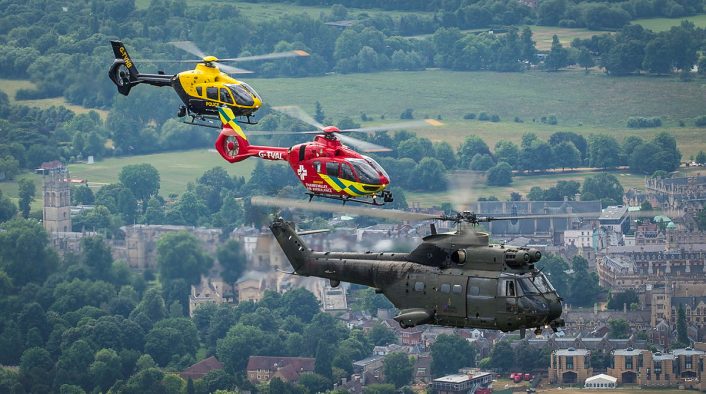
Pumas would continue to operate alongside the UK’s civilian security and ambulance services, with RAF Benson being home to the National Police Air Service and the Thames Valley Air Ambulance with both flying the Airbus H135 helicopter.
President Zelenskyy departs London by military helicopter to visit King Charles in Sandringham 🇬🇧🇺🇦 pic.twitter.com/iMMACv0gCC
— The King’s Guards Channel (@TheKingsGuardsX) March 2, 2025
Puma Life Extension and Afghanistan
The RAF’s Puma HC1s were also sent to Afghanistan to support the British Army’s ground operations during Operation Herrick. However, early on they were found to be unsuitable for the Afghan climate, with the high altitude of Afghanistan’s mountain ranges and the hot air conditions of the Afghan summer interfering with the Puma’s ability to generate enough lift to fly properly.
As a result, the Puma took on a pre deployment training role, where they provided the British Army with experience in helicopter operations for their deployments to Afghanistan. In Afghanistan itself the RAF Chinook force would take on the majority of missions during Herrick.
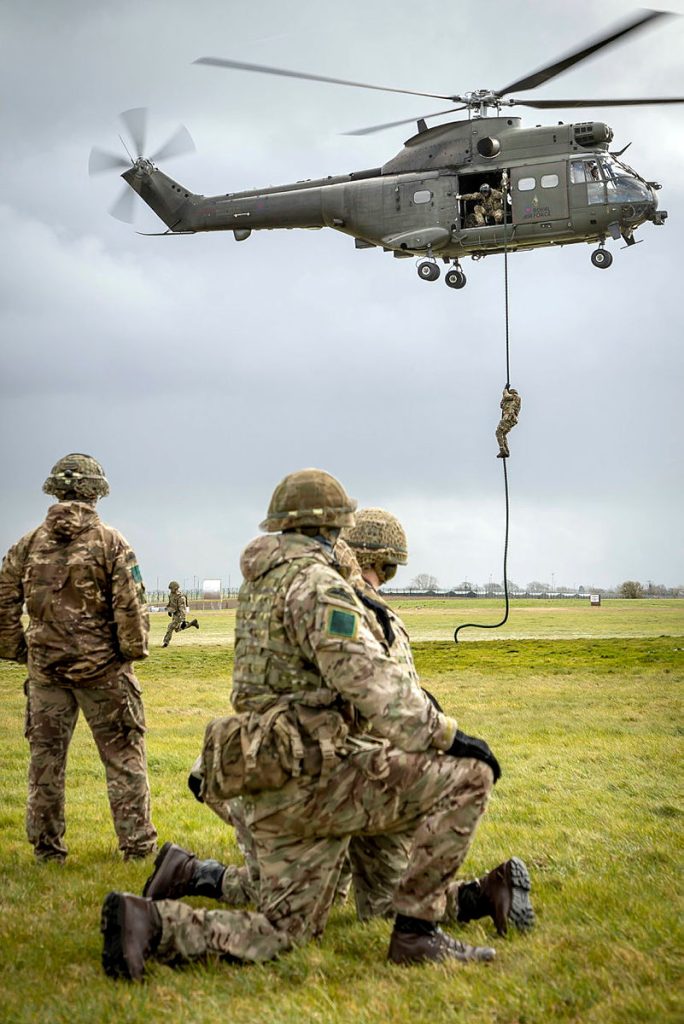
Despite being underpowered, it was recognized that the capability the Puma offered in terms of its agility, small size and rapid deployability meant that there was reason to keep the Puma in service with a life extension program. It was decided that 24 helicopters should be upgraded to a new variant, the HC2, in order to keep them concurrent with other modern helicopters and allow them to serve until 2025.
In 2009, upgrades began with the helicopters receiving a new digital avionics suite, a larger fuel tank and the Makila 1A1 engine from the Super Puma aircraft which would help to overcome the HC1s faults, especially when dealing with Afghanistan’s climate and conditions. Due to this, the Puma returned to Afghan skies in 2015 where it participated in the post warfighting phase of operations, known as Operation Toral.

Three Puma HC2s were deployed at any one time in Afghanistan, providing a lift capacity to Coalition forces, contractors, embassy staff advisors and civilians alike. Improvised explosive device (IED) attacks were extremely common making road travel extremely dangerous, resulting in the Puma having an extremely large workload for such a small force.
Take a look at what the RAF Puma Force are doing in Afghanistan supporting Operation TORAL. pic.twitter.com/vfdBlaPspT
— Royal Air Force (@RoyalAirForce) April 13, 2017
The Puma, with its small airframe and high maneuverability, was able to operate within the urban sprawl of Kabul moving forces around wherever they needed to go. They could carry either 16 passengers, 12 fully armed troops or 2 tons of freight slung underneath or tied down inside the aircraft itself.
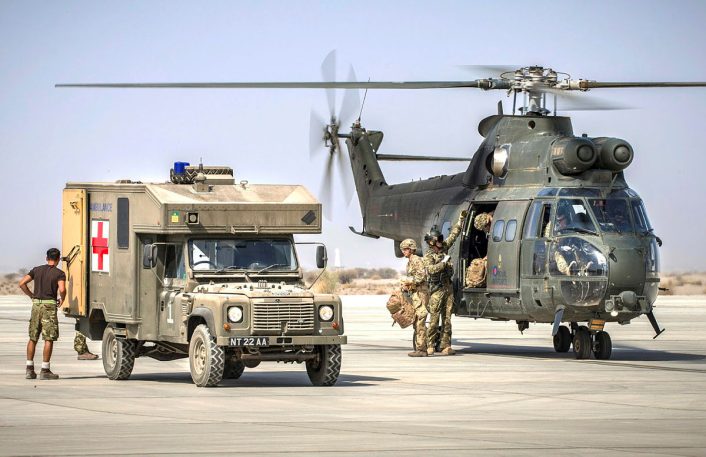
It could also carry up to six stretchers, making it ideal for CASEVAC, which it had taken over from the Chinook. In this role specifically, the Puma’s supported NATO’s quick reaction force, with at least one aircraft on standby to pick up casualties and take them to a field hospital within an hour of the call.
The RAF Puma helicopters and personnel that formed the ‘Toral Aviation Detachment’ in Kabul, Afghanistan have returned to @RAFBenson after over 6 years service in support of @NATO Operations.
Read more: https://t.co/3HtzNNpp0t pic.twitter.com/BTLEo2xc1v
— Royal Air Force (@RoyalAirForce) July 16, 2021
Their deployment came to a close in 2021 amid the Taliban offensive, when the Puma force was stood down from operations in Afghanistan.
Since 2015 they had:
- Amassed 12,800 hours in the air (the equivalent of over 533 days);
- Transported 126,000 passengers;
- Moved 660,000 kgs of freight.
They would be brought home to RAF Benson by the grand AN-225 Mriya that same year.
Twilight Years
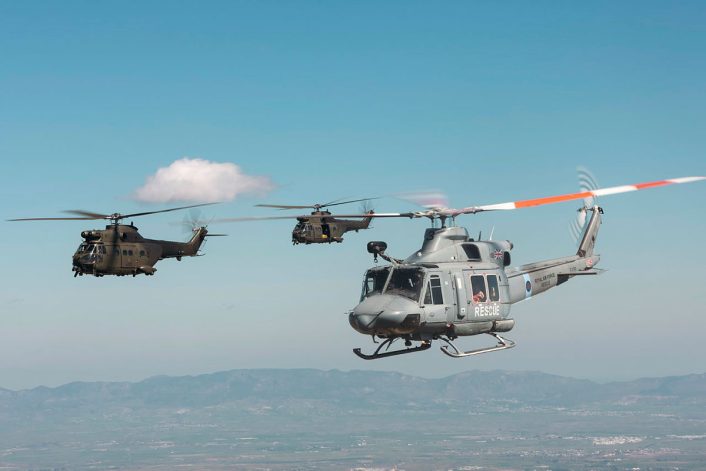
The final deployment of the RAF Pumas would be to Cyprus and Brunei, where the helicopter took on firefighting and utility duties formerly performed by the Griffin HA2 helicopter. The Griffin was withdrawn after the ‘2021 Defence in a Competitive Age’ white paper floated the concept for a New Medium Helicopter program that would replace the Griffin and several other types including the Puma.
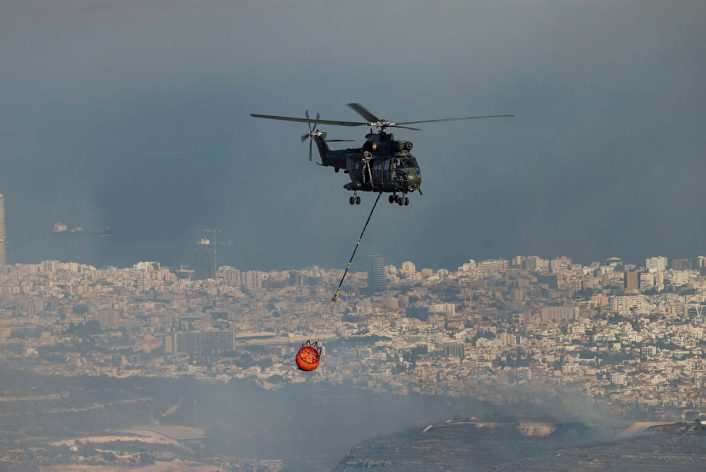
In the short term, however, the Puma fulfilled the role formerly performed by the Griffin. Wildfires are extremely common during the hot weather season in Cyprus, making a firefighting aircraft a necessity for operations conducted from RAF Akrotiri. Several Pumas received high visibility orange paint strips to make them more identifiable when flying in the rescue role.
🗣️ “Thank you very much for your service”
RAF Puma helicopters soar over Cyprus for a spectacular farewell flypast. After two years serving the community on the island, the aircraft is retiring at the end of the month 🇨🇾
🔗 https://t.co/qv1KNmNYGE pic.twitter.com/ARtDQWVV2M
— BFBS Forces News (@ForcesNews) March 30, 2025
With the retirement of the Puma, 84 Squadron performed its own fly-past over Cyprus, as a way of showing appreciation for the aircraft and the role it had performed over the last four years. An interim solution has been brought forward with a small number of Airbus H145s ordered to operate from Cyprus after 2026. Named the Jupiter HA2, this fleet of 6 aircraft will perform the same role as the Puma and the Griffin long into the future.
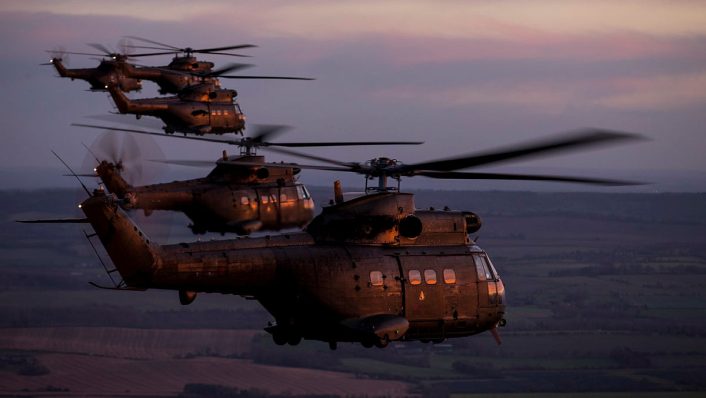
The Puma fleet, now silent after 54 years, leaves a long and storied legacy behind it. Generations of aircrews have flown it, thousands of soldiers have deployed from it and millions of memories have been made by it.
For the RAF this is truly the end of an era.

